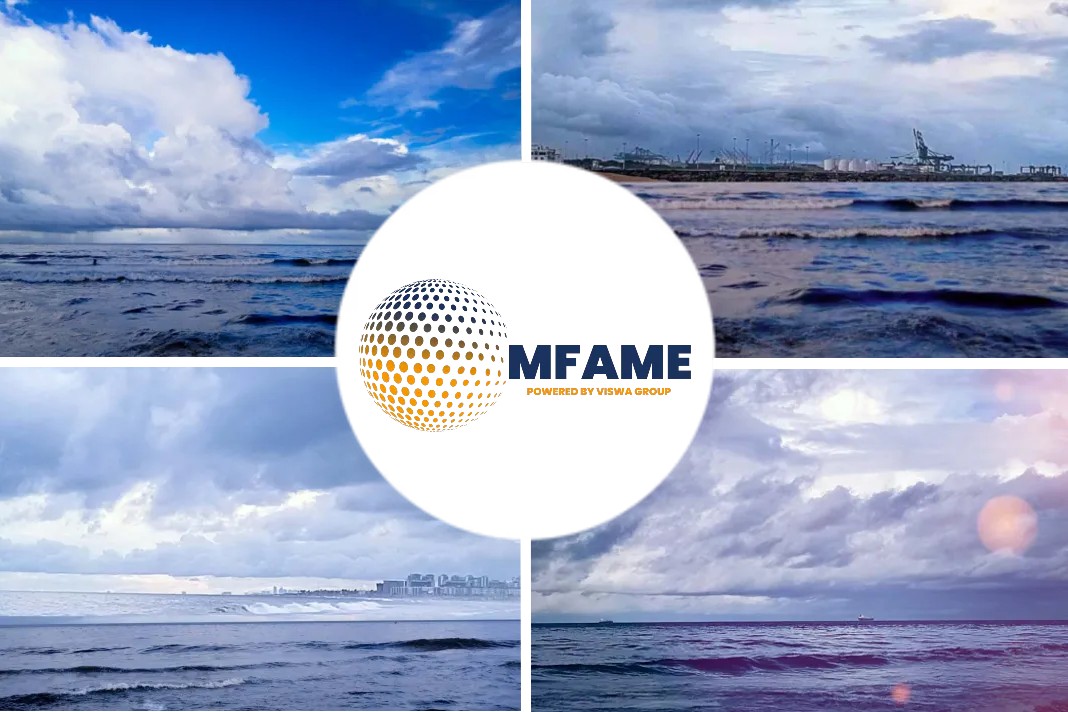
In theory, capturing carbon before it goes up the funnel and into the atmosphere, and then storing it onboard for discharge, could allow the use of hydrocarbon-based fuels, but is the technology ready? questions Riviera Maritime Media.
Carbon Capture on the Ocean project
Japanese classification society ClassNK was one of the first to release guidelines for onboard CO2 capture and storage. The Guidelines for Shipboard CO2 Capture and Storage Systems include safety provisions and notations indicating when vessels are ready for the installation of a CCS systems.
Guidelines are essential for the adoption of onboard systems that capture and store CO2 from ship’s exhaust gases to reduce greenhouse gas (GHG) emissions.
ClassNK was part of the Carbon Capture on the Ocean project, along with Mitsubishi Shipbuilding Co and Kawasaki Kisen Kaisha (K-Line), to make the world’s first marine-based CO2 capture system on a voyage. IT has also been involved in evaluating and verifying the project from a safety perspective.
When utilising shipboard CO2 capture and storage systems, ClassNK noted it is important to consider additional equipment installation space, such as CO2 absorption units and storage tanks, and also to factor in additional energy for heating the amine solutions and driving pumps.
“Capturing and liquefying CO2 would require a significant amount of space.”
The technology to capture CO2 on tankers is understood and widely available, but capturing and liquefying CO2 would require a significant amount of space and absorb cargo-carrying capacity unless discharged efficiently.
That is one of the issues being looked at by the Global Centre for Maritime Decarbonisation (GCMD), which envisages offloading liquefied CO2 (LCO2) alongside concurrent cargo and/or bunkering operations.
Project REMARCCABLE
GCMD has initiated a concept study that will address safety and operational considerations surrounding the offloading LCO2 that has been captured on board tankers, bulkers and container liners, including articulating the temperatures and pressures under which this process would optimally take place and the different receptacles to be used for this purpose.
The outcome of the study may provide insights for offloading CO2 as a cargo under currently less-established operating and storage conditions.
GCMD has awarded its concept study on offloading LCO2 captured on board ships to Lloyd’s Register (LR), supported by its partner Arup. The adoption of the concept bridges a gap in the LCO2 supply chain and lies at the centre of Project REMARCCABLE, one of the world’s largest end-to-end demonstrations of shipboard CO2 capture at scale.
On awarding the concept study to Lloyd’s Register, GCMD chief executive Professor Lynn Loo said: “We are pleased to be working with Lloyd’s Register on this LCO2 offloading concept study. The learnings from this study will inform how captured CO2 can be offloaded from various vessel types in general and enable the sea trials on Stena Impero that are being planned as part of Project REMARCCABLE more specifically.”
Others in the shipping industry see CO2 as another business opportunity. “The transport of CO2 will soon be a new opportunity for shipping companies, which can provide a flexible and cost-effective transport solution to the storage facilities,” said Danish Shipping deputy chief executive, Jacob K Clasen.
Did you subscribe to our newsletter?
It’s free! Click here to subscribe!
Source: Riviera Maritime Media





















